
This wooden saddle (below) was found with a third-century a.d. burial of a nomadic equestrian in Mongolia. A leather strap, to the left, threaded through an opening in the saddle may be the earliest evidence for riding stirrups. An iron bit (below, right) with antler cheekpieces was also found in the cave.
SIX YEARS AGO, POLICE in Mongolia’s western Khovd Province apprehended looters in possession of a set of unusual artifacts. The group had taken a birch saddle, an iron bit with antler cheekpieces, and wooden archery equipment from an ancient coffin tucked into a cave on a mountain known as Urd Ulaan Uneet in the Altai range. Suspecting the objects were historically significant, the police contacted archaeologist Jamsranjav Bayarsaikhan of the National Museum of Mongolia. Bayarsaikhan knew examples of ancient horse tack are very rare, so he and his team made the trip to far western Mongolia to collect the objects and study the site. He was immediately impressed by the saddle, which was painted deep red with black trim. “It looks like it could have been ridden yesterday,” Bayarsaikhan says. At Urd Ulaan Uneet, the team recovered the remains of a man and his clothing, including sheep- and badger-hide jackets and a pair of sheep-hide pants. They also found the mummified remains of a horse that was likely interred with the man in a ritual practice known as a “head and hoof” burial that has been typical of steppe people in Eurasia for millennia. The horse was a chestnut with ear tags, or notches, which were used by nomadic people to mark their mounts.
This story is from the {{IssueName}} edition of {{MagazineName}}.
Start your 7-day Magzter GOLD free trial to access thousands of curated premium stories, and 9,000+ magazines and newspapers.
Already a subscriber ? Sign In
This story is from the {{IssueName}} edition of {{MagazineName}}.
Start your 7-day Magzter GOLD free trial to access thousands of curated premium stories, and 9,000+ magazines and newspapers.
Already a subscriber? Sign In
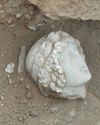
Digs & Discoveries - A Friend For Hercules - Archaeologists discovered a finely carved head depicting Apollo, god of the sun, music, and poetry.
While digging at the crossroads of the two main streets in the ancient city of Philippi in northern Greece, archaeologists discovered a finely carved head depicting Apollo, god of the sun, music, and poetry.
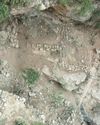
Digs & Discoveries - A Fortress Sanctuary - A sprawling 2,000-year-old fortress in the Zagros Mountains of Iraqi Kurdistan appears to have included a sanctuary dedicated to the ancient Persian water goddess Anahita.
A sprawling 2,000-year-old fortress in the Zagros Mountains of Iraqi Kurdistan appears to have included a sanctuary dedicated to the ancient Persian water goddess Anahita.
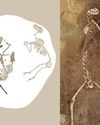
Like Cats And Dogs – Archeologist fund the skeleton of a male Eurasian lynx (Lynx lynx), a notoriously shy creature.
Оn the periphery of Zamárdi, an ancient lakeshore settlement in west-central Hungary, archaeologists uncovered a nearly five-foot-deep beehive-shaped pit with the skeletons of four adult dogs buried in successive shallow layers.
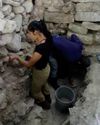
A Dynasty Born In Fire- How an upstart Maya king forged a new social order amid chaos
At the beginning of the Terminal Classic period (ca. A.D. 810-1000), many of the great kingdoms of the southern Maya lowlands-among them Tikal, Palenque, and Calakmul-were being abandoned or collapsing. For many years, scholars have assumed that most, if not all, the other kingdoms across the Maya world must have also been in steep decline.
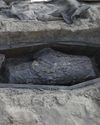
Medical Malfeasance - Archaeologists uncovered two coffins during excavations of a nineteenth-century cemetery in Quebec City that provide evidence of the illicit practice of diverting corpses for the study of human anatomy.
Archaeologists uncovered two coffins during excavations of a nineteenth-century cemetery in Quebec City that provide evidence of the illicit practice of diverting corpses for the study of human anatomy. Starting in 1847, medical students were required to have practical experience studying human anatomy, but legal options to procure cadavers were limited
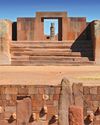
RISE AND FALL OF TIWANAKU
New dating techniques are unraveling the mystery of a sacred Andean city
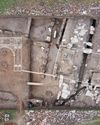
Making a Roman Emperor
A newly discovered monumental arch in Serbia reveals a family's rise to power in the late second century A.D.
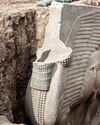
The Assyrian Renaissance
Archaeologists return to Nineveh in northern Iraq, one of the ancient world's grandest imperial capitals

Java's Megalithic Mountain
Across the Indonesian archipelago, people raised immense stones to honor their ancestors
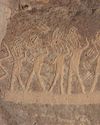
THE SONG IN THE STONE
Located in a desert gorge in southern Peru, Toro Muerto is one of the richest rock art sites in South America. It includes at least 2,600 boulders bearing petroglyphs, many featuring figures known as danzantes who appear to be dancing.